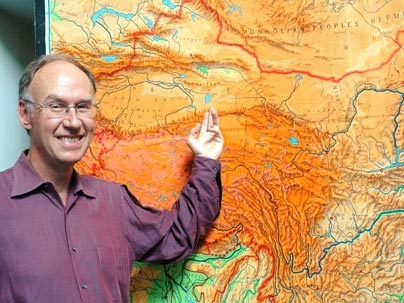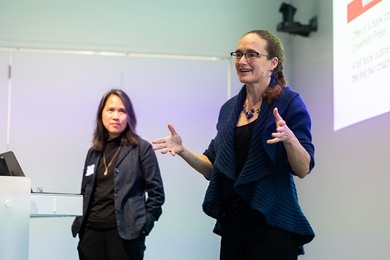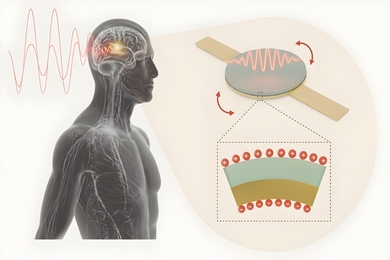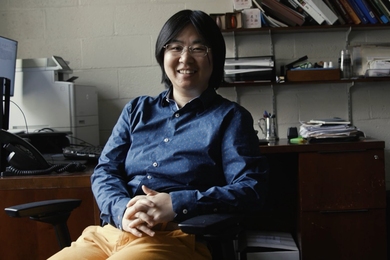A new book by MIT historian Peter Perdue shows how the Qing empire of China conquered and controlled Central Asia during the 18th century, shedding light not only on the intricate machinery of empire-building 300 years ago, but also on the challenges facing modern-day Beijing as unrest and regional inequities recur.
Perdue, who is the T.T. and Wei Fong Chao Professor of Asian Civilizations, began working on "China Marches West: The Qing Conquest of Central Eurasia" more than 20 years ago. Published by Harvard University Press earlier this year, Perdue's book was named an Outstanding New Book by Foreign Affairs in the spring.
Foreign Affairs reviewer Lucien Pye described "China Marches West" as a "major work" that effectively challenges the conventional casting of Central Asia as a crossroads of European powers and rejects a linear view of history.
Perdue opens his book in a way that dispenses with Eurocentrism and the "railroad track" view altogether. He focuses with cinematic clarity on three great powers--the Manchu Qing, the Muscovite Russians and the Mongolian Zunghars--who fought for control of Eurasia from the 17th to the mid-18th century.
"By the end of this epic confrontation, an early version of the 'Great game,' only two empires were left standing. The Qing and Russians faced each other along an extended border … This binary division of Eurasia lasted until the collapse of the Soviet Union in 1991," he writes.
In "China Marches West," Perdue explores how the Qing were able to dominate Central Asia for so long. He shows how the Qing faced problems similar to other colonial empires, employing both repression and investment to control their vast, multicultural, multi-climatic realm.
Modern Beijing confronts problems similar to the Qing's with similar tools. The People's Republic of China (PRC) has an ambitious project under way to "develop the west" so the interior and coastal regions gain economic balance. The PRC has also labeled independence movements, such as East Turkestan's, as terrorist organizations. As Perdue notes in his preface, the "imperial legacy of conquest still hangs heavy over the future of the Chinese nation-state."
Perdue, 55, began work on "China Marches" when he was in Beijing completing his first book, "Exhausting the Earth: State and Peasant in Hunan, 1500-1850 A.D." Hunan is the birthplace of Chinese Communist Party Chairman Mao Zedong, who founded the People's Republic in 1949 and ruled absolutely until his death in 1976.
"After normalization in 1979, I had access to very rich archival material in Beijing. I discovered precise records on military supplies, such as grain, during the Qing period. There were also wonderful documents in the Russian archives--literally transcribed conversations between Mongolian and Russian officials in which they passed along political news about China. This was exciting. I quickly saw I could do a survey or dig in and get the whole story," Perdue said.
The "whole story" is a 750-page volume that illustrates the Qing imperial saga with photographs from the 1920s and fine-arts quality reproductions of individual ruler's portraits, armies setting out from palaces and scenes of thronged victory banquets.
The text sustains the cinematic approach of Perdue's opening scene, bringing to life intricate military campaigns, religious conflicts and the role of medicine (the Qing developed inoculations against smallpox) and science.
The book is full of maps, and Perdue uses them to show how science and technology were used for imperial purposes. In the chapter titled "Moving Through the Land," Perdue discusses the Qing's political use of surveying and "scientific cartography," brought to China by the Jesuits in the early 1700s.
A "radically simplified map of the northwest frontier shows only blank space beyond the Great Wall … the most troublesome area of conflict between the empire and Mongolian tribes … The atlas gives no hint that diverse peoples moved through the space it depicts, or that there were contested claims to the area," Perdue writes.
Later, he notes that the "imperial gaze" approach was common to the Qing maps of Central Asia and the British maps of India.
"The message of cartography was that 'this is an imperial space to be governed by us.' Both the Manchu and British conquerors shared the drive to create a comprehensive, abstracted vision of an imperial realm … even though it did not fit the features of the local terrain," Perdue writes.
Mapmaking--marking space--also "marked time by constructing public boundaries between the present and the past," Perdue notes, referring to the way history is "produced" by political interests.
Sections on state formation, the economic basis of empire, fixing frontiers and the legacies of the Qing provide structure and narrative to the book.
In the final section, Perdue moves his topic into the present with chapters on "Geopolitics and Emperor Worship," "Empires, Nations and Peoples" and "Rethinking the Qing in the World."
Noting that his book "demonstrates the continuity between empire and nation," Perdue outlines in his conclusion the long shadow cast by the Qing on contemporary Chinese politics and international relations.
The rise and fall of the Qing empire "may offer some guidance to Chinese interested in negotiating a new identity for their nation in the twenty-first century," he writes.Â
A version of this article appeared in MIT Tech Talk on September 28, 2005 (download PDF).






